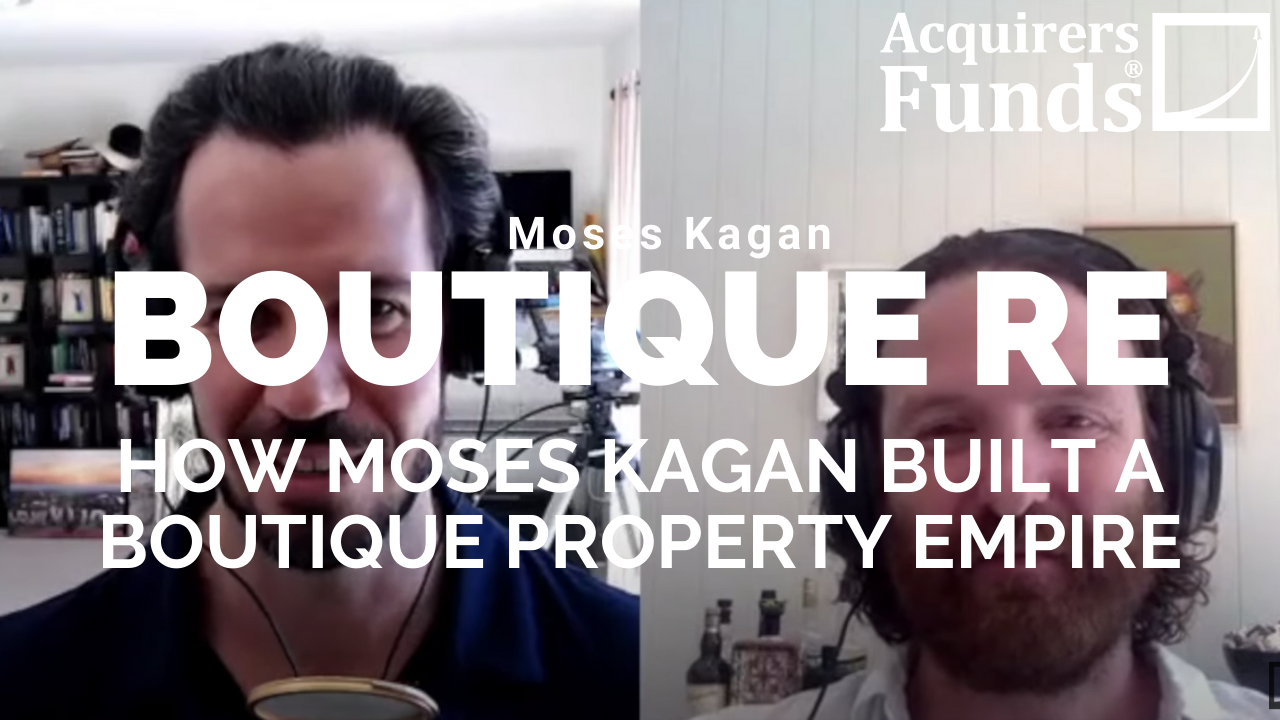During his recent interview with Tobias, Moses Kagan, Co-Founder & Partner at Adaptive Realty discussed As Long As You’re Not A Forced Seller (Of Real Estate), You’re Going To Do Fine. Here’s an excerpt from the interview:
Moses Kagan:
Again, this doesn’t apply to some random place, but if you’re in a great market, if you’re in LA or San Francisco, as long as you’re not a forced seller, you’re probably going to do fine. There’s a question of, did you buy the right thing at the right price and do you manage it better or worse? And there’s all those things of course a matter of time. But fundamentally, as long as you can buy and not be forced to sell at the wrong time, you’re probably going to be okay. Anyway, sorry for the kind of the detour there. So we buy all cash, we use very small either no debt to fund the renovations, or small amounts of debt. When the property is done, we retenant it. And at that point we will go to the bank and say, “Hey look, Mr. Banker, here’s the new rent roll, here’s the new proforma net operating income, the new unlevered cashflow that the property will throw off. Please value this according to market comps and give us a reasonable loan, against this asset that we own.”
Moses Kagan:
And depending on how well we’ve done our job, in other words, how much value we’ve created. One way to think about this is like one plus one equals three. I know it sounds weird. The building is worth when we’re done with it, considerably more than the total amount that we have invested in it. I’ve read this a million times in books along the way and until I did this the first time, I was like, does this really work like this? But it really does. You can buy a building for a million and put a million into it, and have a bank come and tell you it’s worth 3 million. And that’s just because the appraisal is done on the cashflow.
Moses Kagan:
And if you’ve done a good job of renovating the building in a way that raises rents, then you can get the building valued, at a price that has a value, that has nothing to do with the amount that you put into to creating the building. And then in that scenario, ordinarily what people do is sell, right? Okay, I mean, I put 2,000,000,000 and it’s worth 2.8 or whatever the number is. I’m just going to sell it and we’re going to take our money. Okay. What we do is we say, “Hey, look, Mr. Banker, the building’s worth whatever it is.” 3,000,000,000 would be ridiculous. We’ve had a 50% uplift before, but that’s, would be extraordinarily rare. We’re likely, you’re like in a 30%, 40% uplift is what would be a great deal?
Moses Kagan:
And you just say, “Hey look, can I get alone for 65% of the value, maybe 70% of the value of this asset.” And the bank takes a look at the numbers and they look at their interest rate that they’re loaning at and what they’re comfortable with and they typically get pretty comfortable that they’ll loan you 65% of that new appraised value. Well, it just so happens that 65% of the new higher value allows you to pull out, almost all of the capital that you’ve put into the deal. In many cases we’ve been able to pull all of the capital out. And what we do once we’ve pulled the capital out is distribute that back to the investors. And that’s what’s called a debt finance distribution and subject to a whole bunch of limits, and console your CPA and tax attorney, all that stuff before you take what I’m about to say to heart.
Moses Kagan:
Subject to all these limits. That is a tax free distribution. We put all this money and buy, fix up the building. We get this loan and we basically get, somewhere between 80 and 100% of the capital back out. We hand it to the investors tax-free. Okay? Thereafter, asking the investors to hold the asset permanently, is not so painful. What you’ve done by giving them their money back, is dramatically reduced the opportunity cost of holding that thing. It’s not like they have all their capital tied up in this asset and you’re asking them to hold it forever. You’re saying, “Hey, you got 85% of your money back, or whatever it is.” And by the way, we’re earning a very high levered return on the small sleever of equity that we’ve left in the deal. So you feel good about what you’ve left in the deal, but meanwhile you have the rest of the money back and you can either give it back to us and we go buy another building, or you put it in stock market, or do whatever else you want with it.
You can find out more about Tobias’ podcast here – The Acquirers Podcast. You can also listen to the podcast on your favorite podcast platforms here:
For all the latest news and podcasts, join our free newsletter here.
Don’t forget to check out our FREE Large Cap 1000 – Stock Screener, here at The Acquirer’s Multiple:



